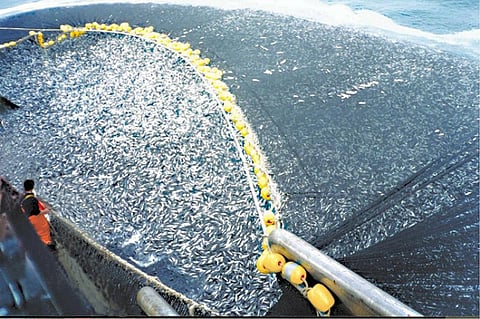

The members of the South Pacific Regional Fisheries Management Organization (SPRFMO) have embraced U.S. proposals to establish boarding and inspection procedures on the high seas, as well as to consider the impact of climate change and advances in conservation in its decision-making.
At its 11th annual meeting in Ecuador this month, the SPRFMO adopted a total of 13 proposals, including the U.S.-led move to combat illegal, unreported, and unregulated fishing in the Pacific.
Negotiations on the measure have been ongoing for more than five years, but failed to reach a middle ground until this month's meeting. The United States proposal is to establish SPRFMO-specific procedures on high seas boarding and inspection of the South Pacific area, and thus achieve greater surveillance and monitoring over fishing activities in the Convention Area.
Another proposal made by the U.S. was for the Commission and its science and compliance committees to consider climate change as a standing agenda item in all future meetings. This is seen as an important step for SPRFMO to help address climate change and ensure that the organization considers this issue in its decision making.
Members also adopted a move to improve the conservation of vulnerable marine ecosystems in the South Pacific and take further steps to improve the conservation and management of high seas bottom fishing. The measure will implement a minimum level of protection of 70% of suitable habitat for vulnerable marine ecosystems. Although the U.S. advocated for an even higher level of protection, the new measure marks an important step forward towards stronger protection of deep-sea resources.
The United States also chaired a working group that developed a proposal for the allocation of jack mackerel between current and new participants. The recovery of jack mackerel from its depleted state a decade ago to the prosperous and sustainably managed fishery it is now is a significant achievement for the SPRFMO.
Progress was also made in controlling fishing levels in the jumbo flying squid jigging fishery. Members adopted a measure that will, for the first time, limit the number and size of vessels flagged to China, Taiwan (participating as Chinese Taipei), and Korea that target squid in the eastern Pacific.
The development is considered is an important step towards controlling fishing levels according to a sustainable plan, with the US National Oceanic and Atmospheric Administration hailing the agreement as an "an example of the success that can be achieved through international cooperation in regional fisheries management organizations."
The South Pacific Regional Fisheries Management Organisation is an inter-governmental organisation that is committed to the long-term conservation and sustainable use of the fishery resources of the South Pacific Ocean and in so doing safeguarding the marine ecosystems in which the resources occur.
The SPRFMO Convention applies to the high seas of the South Pacific, covering about a fourth of the Earth's high seas areas.
Currently, the main commercial resources fished in the SPRFMO Area are jack mackerel and jumbo flying squid in the Southeast Pacific and, to a much lesser degree, deep-sea species often associated with seamounts in the Southwest Pacific.
